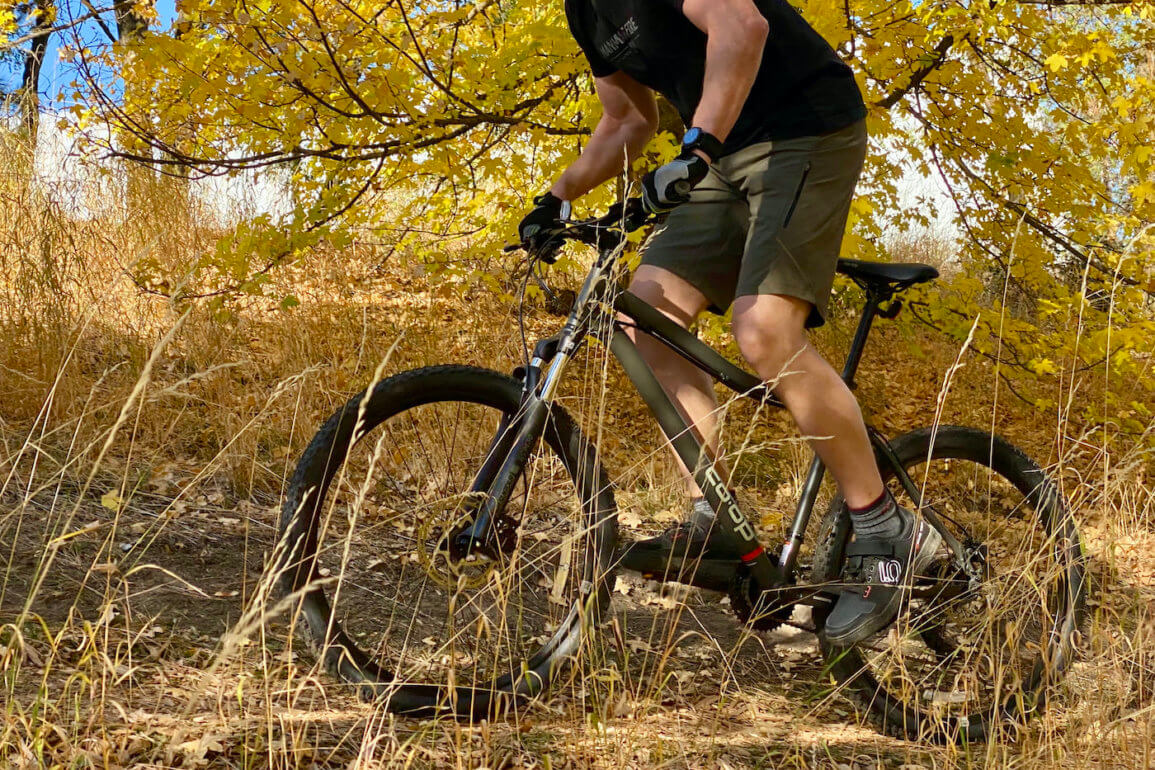The REI Co-op Cycles DRT 1.1 is a hardtail mountain bike aimed at recreational riders who want a solid-but-affordable bike they can ride on a variety of terrain.
As an entry-level mountain bike, the DRT 1.1 is capable on relatively rough trails for beginner-to-intermediate riders. It’s far better than cheap department store bikes and it’s very competitive with entry-level bikes offered by the largest mountain bike manufacturers.
Let’s take a closer look to see if the DRT 1.1 is right for you.
DRT 1.1 Bike Review
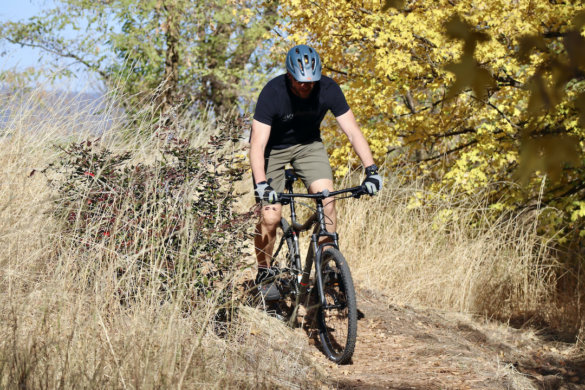
First off, you should know that nearly all bike manufacturers build their bikes by choosing from the same pool of core drivetrain, fork, and shifting components built by third-party manufacturers. For example, two competitive mountain bikes that are offered at very similar price points might have the exact same hydraulic disc brakes. Or the same front fork. Or, in the case of the DRT 1.1, essentially the same Shimano Tourney 42-34-24 crankset that’s also found on a Diamondback Hatch 2 or a TREK Marlin 4.
So what bike manufacturers do is create their own frames and match their frames to different components to make their bikes. They mix and match components, choosing higher quality, more expensive components here — and lesser quality, less expensive components there — to create a bike that can compete at a particular price point. For instance, the REI Co-op DRT 1.1 is designed to compete at the $600 price point.
When it comes to entry-level, beginner mountain bikes, what you’re really looking for, first and foremost, is a reputable manufacturer.
REI has been producing Co-op Cycles for years and has been doing a great job of creating solid bikes with competitive price-to-value ratios. By selling its own line of bikes through its own retail and online store, REI can essentially cut out some of the middlemen involved and offer a great bike at a compelling price.
So, the short answer in this review is that the DRT 1.1 is a great entry-level hardtail mountain bike. It is more capable on the trail than most riders and will be a great ride. That said, let’s take a closer look at some of REI’s design choices and see what that might mean for you on the trail.
Nimble on the Trail
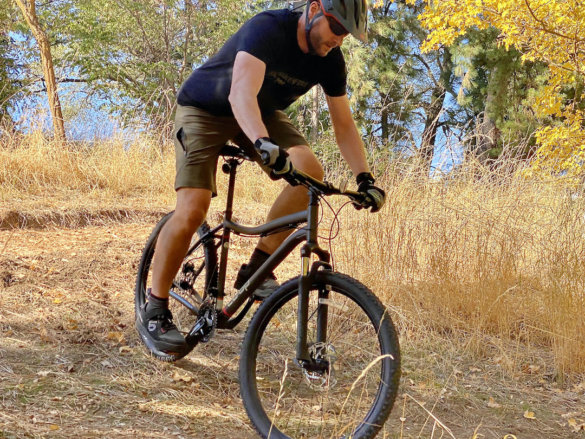
I rode the DRT 1.1 in a size XL with 27.5″ wheels on Kendra Kadre tires. On the trail, it feels relatively agile for its price point. The Tektro hydraulic disc brakes didn’t have any trouble stopping my 220-pound body on some steep-for-me descents. The SR Suntour front fork with a 100mm of travel sucked up roots, rocks, some short concrete stair drops, as well as bumps and cracks in asphalt trail with ease. (Just remember, while the fork is good, it’s not designed to really hammer hard stuff at high speeds.)
The Shimano 3×7 21-speed drivetrain gives you a wide range of gears to choose from. You can drop down to a really low gear and pedal up some steep hills . . . or move up to a high gear and cruise at high speed along a paved greenbelt trail. The Shimano drivetrain is designed for versatility over multiple kinds of terrain — that’s the benefit. You’ll find similar drive trains among today’s entry-level mountain bikes.
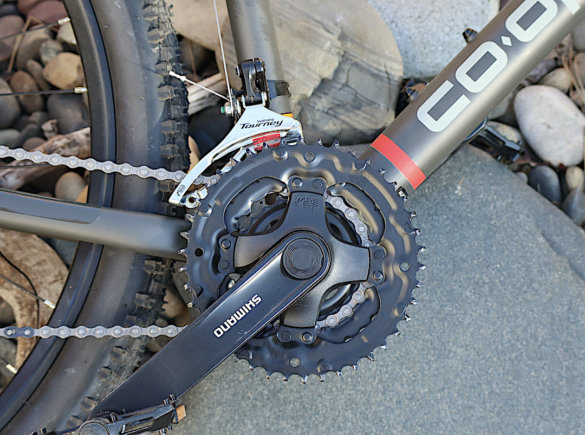
27.5″ Wheels
The DRT 1.1 uses 27.5″ wheels in all size options. Some bikes, including the DRT 1.2, offer 27.5″ wheels on the smaller size options but jump up in size to 29″ wheels on the larger size options. Note: Old-school mountain bikes used to run 26″ wheels.
You might be wondering: Is the tire size a big deal?
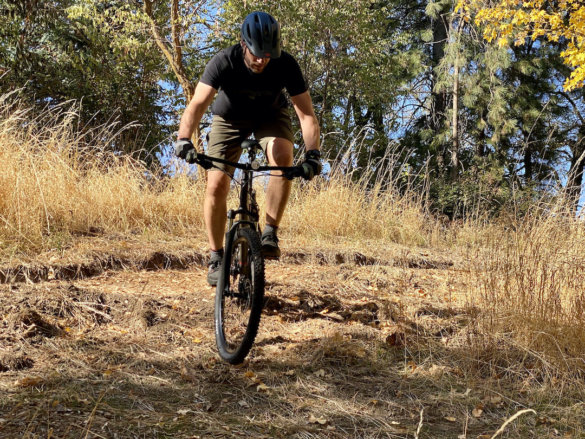
This question has a bit of nuance to it. In general, 29″ tires roll over rough terrain better than 27.5″ tires. However, they’re slightly heavier and slightly less agile in tight corners. They’re also a bit slower to accelerate because, well, they’re bigger tires with more mass.
If you plan to become increasingly aggressive on trails, particularly rugged trails at higher speeds with lots of downhill action, 29″ wheels will give you a better ride. That said, the 27.5″ wheels on the DRT 1.1 are a great compromise size for beginners to handle. They’re capable over trails but don’t feel too slow or bulky on pavement and gravel. REI is going for versatility here.
Sizing Tip:
If you’re not sure about your size, check out REI’s handy new How to Fit a Bike & Get the Right Size guide.
DRT 1.1 vs DRT 1.2
I used to believe that the next-level up DRT 1.2 — read my full DRT 1.2 review here — was the best overall price-to-value REI Co-op mountain bike, but after spending some time in the saddle on the DRT 1.1, I’m not as sure anymore.
From a performance standpoint, the DRT 1.1 feels nearly as good as the DRT 1.2.
The shifting is reasonably crisp, the hydraulic disc brakes are good, and the 100mm SR Suntour fork sucks up all but the biggest hits . . . almost as well as the DRT 1.2’s 120mm SR Suntour fork.
On-the-trail handling is also similar. While the DRT 1.2 generally has a longer wheelbase and a slightly different frame geometry, most newer trail riders won’t notice the differences (but the L and XL with the 29ers will roll better over rough ground if you’re a larger rider).
The biggest difference for most riders, frankly, will be the $400 price difference.
However, that’s not to say the DRT 1.2 is overpriced. It’s not. Pretty much everywhere you get a slightly upgraded component, and it’s dropper post compatible (upgradable). What is a dropper post? A dropper post is a hydraulic seat post that lets you lower and raise the seat as you ride. For example, it’s easier to ride down steep descents when your seat is low and out of the way. But you also need your seat higher to when it’s time to pedal. You can get off the bike to manually lower and raise your seat, but a dropper post lets you do it on the fly. (If you become a better, more aggressive rider you’ll want a dropper post.)
Here is my basic recommendation: If you expect to ride over rough trails with lots of rocks and roots — and want to gain new skill and speed but remain on a tight budget — I would recommend the DRT 1.2 over the DRT 1.1. The $400 will be worth it. If, on the other hand, you expect to take dirt trails and gravel roads more for relaxation than adrenaline, the DRT 1.1 is definitely the better buy.
Shop all ‘hardtail’ mountain bikes at REI — and nab your size before they’re out of stock again!
DRT 1.1 Competitive Options & Alternatives
Most major mountain bike manufacturers offer an entry-level hard-tail mountain bike even though they offer many more expensive bike options. They are, for the most part, all pretty darn good. It’s hard to go wrong with say, an entry-level Cannondale, Trek, Giant, Specialized, or REI Co-op bike. The biggest challenge these days, it turns out, might be finding your size in stock. Here are a few REI DRT 1.1 competitive options to consider to get you out on the trail fast:
Cannondale Trail 8 — The Cannondale Trail 8 gets you a 2×7 (14-gear) drivetrain design, as well as 29″ wheels in the MD, LG, and XL sizes. The biggest drawback is the shorter 75mm of travel in the front fork.
Diamondback Hatch 2 — The Diamondback Hatch 2 is similar to the DRT 1.1, but the Hatch 2 is an entry-level mountain bike that changes the wheel size from 27.5″ in the XS and S sizes — but, like the Trail 8 above, moves it up to 29″ for the M, LG, and XL.
Specialized Rockhopper — The Specialized Rockhopper adds a couple benefits to the mix at a slightly higher price point. You get internal cable routing, which is nice in an entry-level bike, but you also get an SR Suntour XCE front fork that gives you size-specific travel and spring rates that are tuned to more closely fit the likely rider size for each size option.
REI Co-op DRT 1.2 — While the DRT 1.1 is a great buy, if you’re looking for a boost in component quality, the DRT 1.2 remains a fantastic option at the sub-$1,000 price point. Read my full DRT 1.2 review here for more detail.
REI Co-op CTY 2.1 Bike — The benefit of the CTY 2.1 Bike is that it’s lighter and more nimble for riding on pavement and gravel. You can think of it as a cross between a road bike and a mountain bike — but it’s tuned more for roads. REI doesn’t call it a ‘gravel bike’ exactly, but it serves that purpose. Choose the CTY 2.1 if you plan for light trail use with 80% on-road pavement/gravel use.
Get REI Bikes Shipped to You — or Via In-Store Pickup
REI is now shipping bikes directly to your home, so that’s a huge benefit if you don’t live near an REI store. The bikes come mostly assembled, but you will need to install the handlebars, for example, as well as the pedals and seat. The instructions are easy to follow. Almost everyone will be able to assemble the bike — in my experience, barbecue grills are much much harder to assemble! The oversize shipping charge is usually about $75, which is a drawback, but you can avoid that with in-store or curbside pickup (again, if you live close to an REI store).
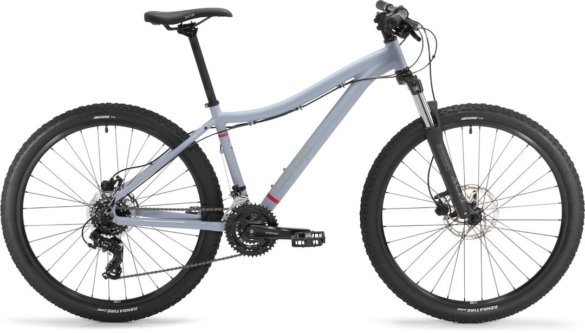
The Verdict: A Multi-Use Winner
While the REI Co-op DRT 1.2 is a slightly smoother, slightly larger and more trail-capable bike, it’s impossible to ignore the outstanding price-to-value ratio delivered by the DRT 1.1. If you plan to ride trails, gravel and pavement and want an inexpensive multi-use bike, it’s hard to go wrong with the REI Co-op Cycles DRT 1.1. Highly recommended.
Get the Gear:

